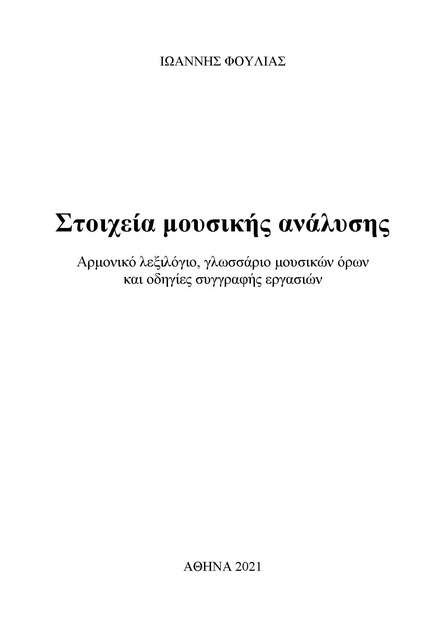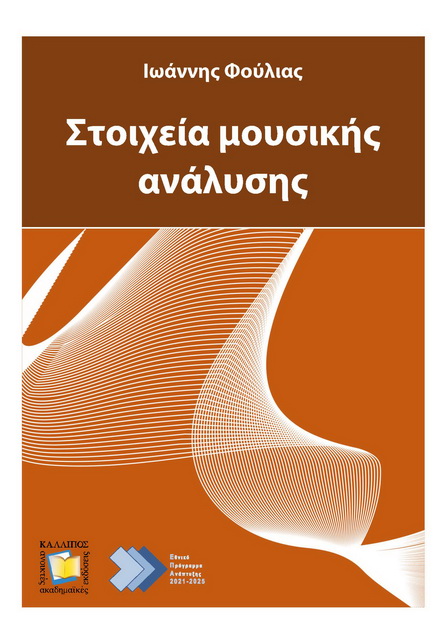Ioannis Fulias, Elements of music analysis: Harmonic vocabulary, a glossary of musical terms, and guidance for writing papers, a) self-publishing, Athens 2021 [xii + 282 pages] (download); b) Kallipos / Open Academic Editions, Athens 2022 [xii + 282 pages, plus cover and back cover] (https://repository.kallipos.gr/handle/11419/8564?&locale=en).
This textbook fills a large gap in the Greek musicological literature that refers to the analysis of the repertoire of tonal music, and consists of three distinct parts. The first part is a thorough study of the harmonic vocabulary of tonal music, i.e. of the available types of chords and their notation under a view that, more or less, assimilates the main relevant traditions cultivated in the field of music theory from the 18th up to the 20th century: the harmonic theory of scale-degrees along with thorough-bass figures, the functional harmony of Hugo Riemann but also the reductive harmonic thought of Heinrich Schenker. Furthermore, a holistic investigation on the degrees of relationship between all keys and harmonic regions used in the musical repertoire already from the late 16th century and, at least, up to the early 20th century is also presented. The second part of the textbook has the form of a glossary, consisting of numerous entries in Greek and Latin alphabets, which refer to terms relevant to the tradition of tonal music, with emphasis on the established technical terminology for the harmonic and structural analysis, on comprehensive descriptions of music forms and genres, but also on terms that are obviously excessive, unsuitable or even incorrectly rendered in Greek. The entries are so designed to operate both independently and within a dense network of interdependent references. The third and last part is a brief guide for writing papers in the field of music analysis, with useful and specialised advice in writing and editing a text, as well as in stylisation and utilisation of the necessary bibliographical references.
NB. There are few minor differences between the two publications: the first one (2021) contains music examples in higher resolution and, more generally, surpasses the second one (2022) in every lingual and technical aspects.
ę Ioannis Fulias

